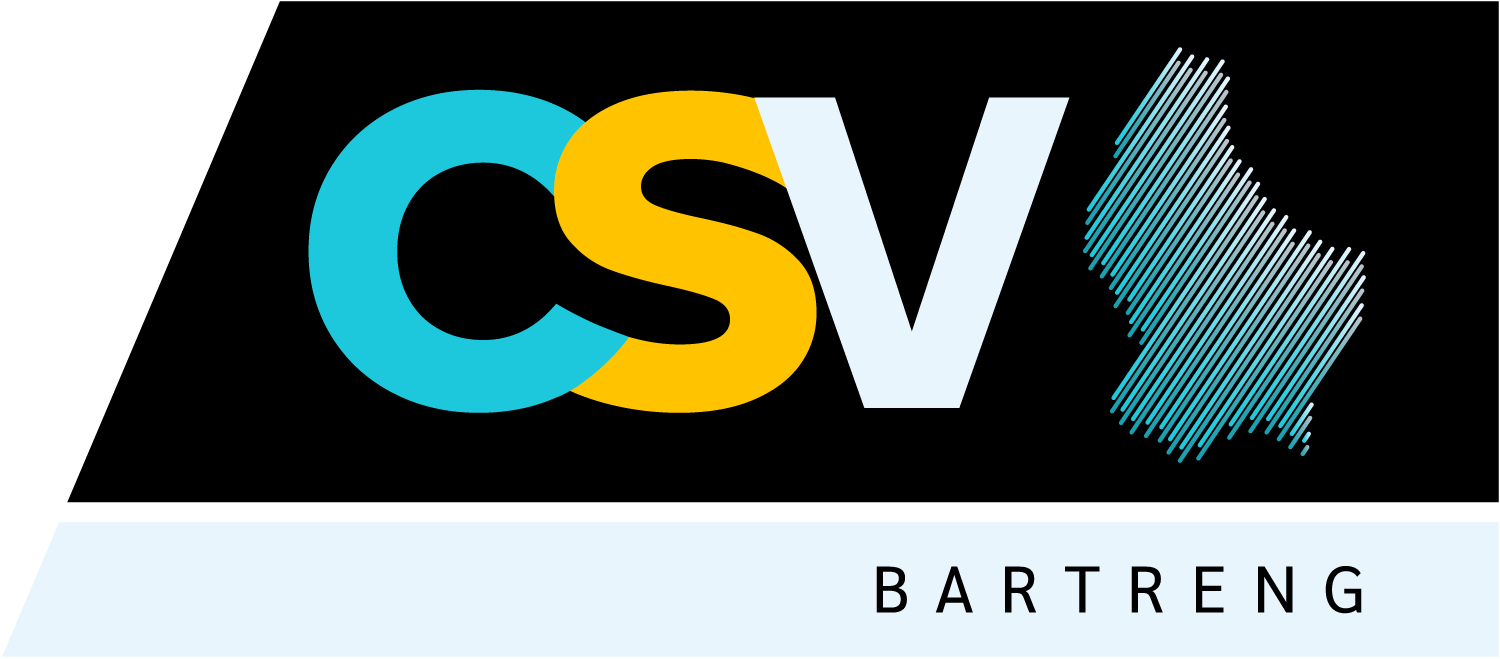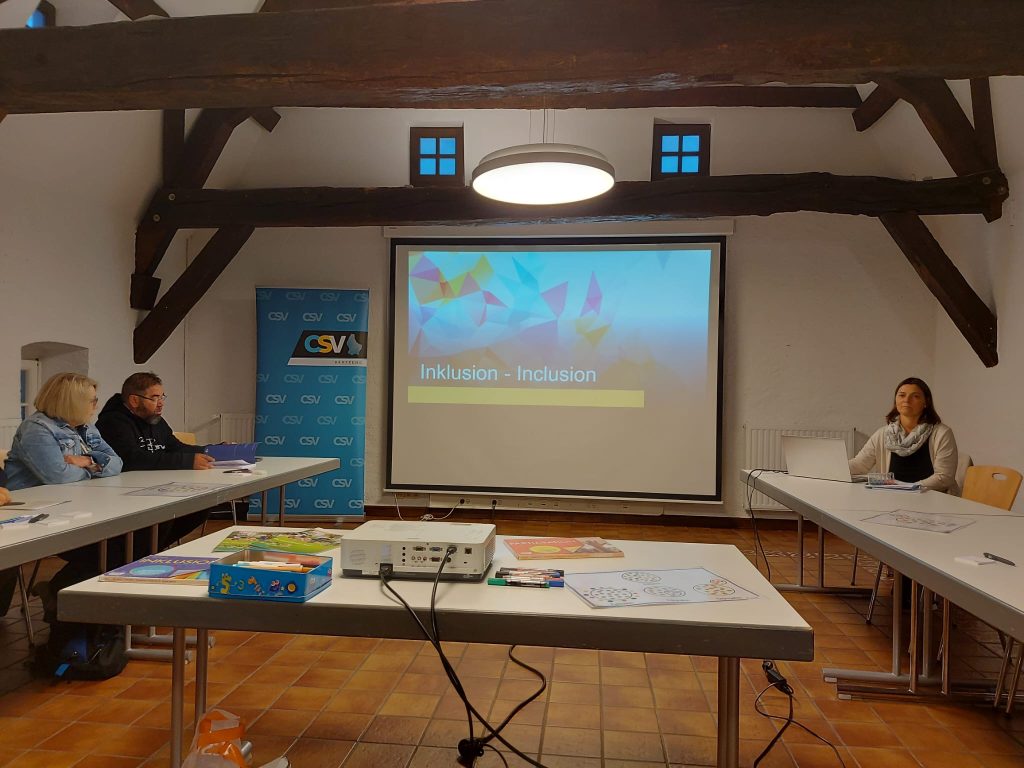E puer Impressioune vun eisem Workshop (3. Oktober 2024), op deem mer e flotten Austausch haten mat deene Leit, déi deelgeholl hunn. Nieft enger Foto fannt Dir och d’PowerPoint, déi Madame Rauchs gewisen huet, wéi si äis an de Sujet ageféiert huet.
Einige Schlussfolgerungen der Werkstatt finden Sie weiter unten. Veuillez trouver quelques conclusions de l’atelier en bas. Please find some conclusions of the workshop down here.
General findings
Inclusion is a human right enshrined in the United Nations Convention.
The way we think of “disability” is how we deal with people with activity limitations.
There are numerous barriers in society:
– spatial (“I can’t get in here, I can’t get through here”),
– in perception (“it’s too quiet for me, it’s written too small for me”),
– in understanding (“I don’t get it, it’s much too complicated”),
– social (“nobody trusts me, I’m not taken seriously”).
We can all break down barriers.
It is important to note:
“Disability” cannot be reduced to motor limitations; the others must be taken just as seriously: the auditory and visual as well as the cognitive, which are connected to thinking, knowledge, remembering and perception.
A ramp is not only built for people in wheelchairs, it also serves older people who have difficulty climbing stairs or families with strollers.
In many areas, we as a society are still a long way from true inclusion.
Integration is only one aspect of inclusion.
It is important not to forget anyone in our society.
Designing communication so that it is accessible to everyone is a very important point.
Conclusions générales
L’inclusion est un droit humain inscrit dans la Convention des Nations Unies.
La façon dont nous concevons le « handicap » est la façon dont nous traitons les personnes en situation de handicap qui limite leurs activités quotidiennes.
Il existe de nombreux obstacles dans la société :
– spatial (« Je ne peux pas entrer ici, je ne peux pas passer par ici »),
– en perception (« c’est trop calme pour moi, c’est écrit trop petit pour moi »),
– en compréhension (« Je ne peux pas vérifier ça, c’est beaucoup trop compliqué »),
– social (« personne ne me fait confiance pour faire quoi que ce soit, je ne suis pas pris au sérieux »).
Nous pouvons tous faire tomber les barrières.
Il est important de noter :
Le « handicap » ne peut être réduit à des limitations motrices ; Il est important de prendre les autres tout aussi au sérieux : les auditifs et visuels ainsi que les cognitifs, qui sont liés à la pensée, à la connaissance, à la mémorisation et à la perception.
Une rampe n’est pas seulement construite pour les personnes en fauteuil roulant, elle s’adresse également aux personnes âgées ayant des difficultés à monter les escaliers ou aux familles avec poussettes.
Dans de nombreux domaines, nous sommes encore loin, en tant que société, d’une véritable inclusion. L’intégration n’est qu’un aspect de l’inclusion.
Il est important de n’oublier personne dans notre société.
Concevoir la communication pour qu’elle soit accessible à tous est un point très important.
Allgemeingültige Erkenntnisse
- Inklusion ist ein Menschenrecht, das in der Konvention der Vereinigten Nationen festgehalten ist.
- So wie wir „Behinderung“ denken, so ist unser Umgang mit Menschen mit Aktivitätsein-schränkungen.
- Es gibt zahlreiche Barrieren in der Gesellschaft:
– räumliche („ich komme hier nicht rein, ich komme hier nicht durch“),
– in der Wahrnehmung („das ist mir zu leise, das ist mir zu klein geschrieben“),
– im Verstehen („das check ich nicht, viel zu kompliziert“),
– soziale („mir traut keiner etwas zu, ich werde nicht ernst genommen“).
- Wir alle können Barrieren abbauen.
Festzuhalten gilt:
- „Behinderung“ ist nicht auf motorische Einschränkungen zu reduzieren; es gilt, die anderen genau so ernst zu nehmen: die auditiven und visuellen sowie die kognitiven, die mit Denken, Wissen, Erinnern und Wahrnehmen in Verbindung stehen.
- Eine Rampe wird nicht nur gebaut für Personen im Rollstuhl, sie dient zugleich älteren Menschen, die sich schwer tun beim Treppengehen oder etwa Familien mit Kinderwagen.
- In vielen Bereichen sind wir als Gesellschaft noch weit weg von wahrer Inklusion.
- Integration ist nur ein Aspekt der Inklusion.
- Es gilt, niemanden in unserer Gesellschaft zu vergessen.
- Kommunikation so zu gestalten, dass sie für alle Menschen zugänglich ist, ist ein sehr wichtiger Punkt.

